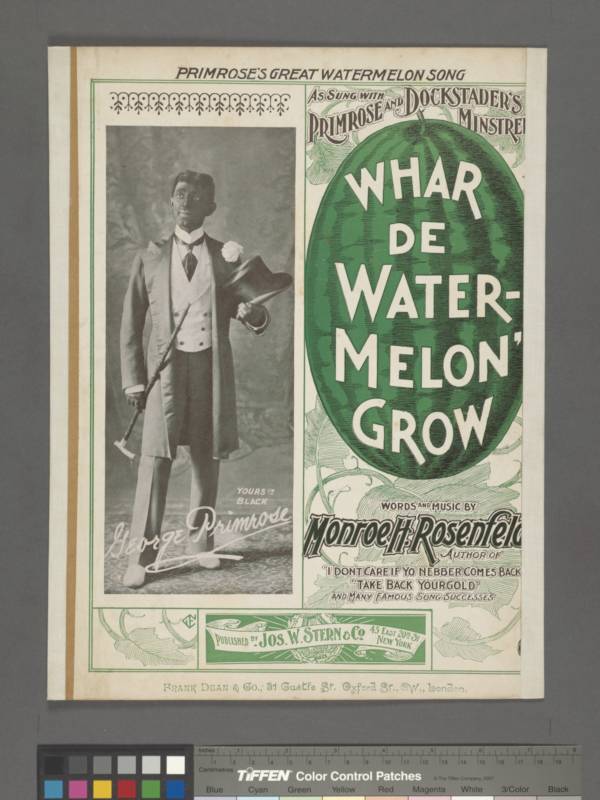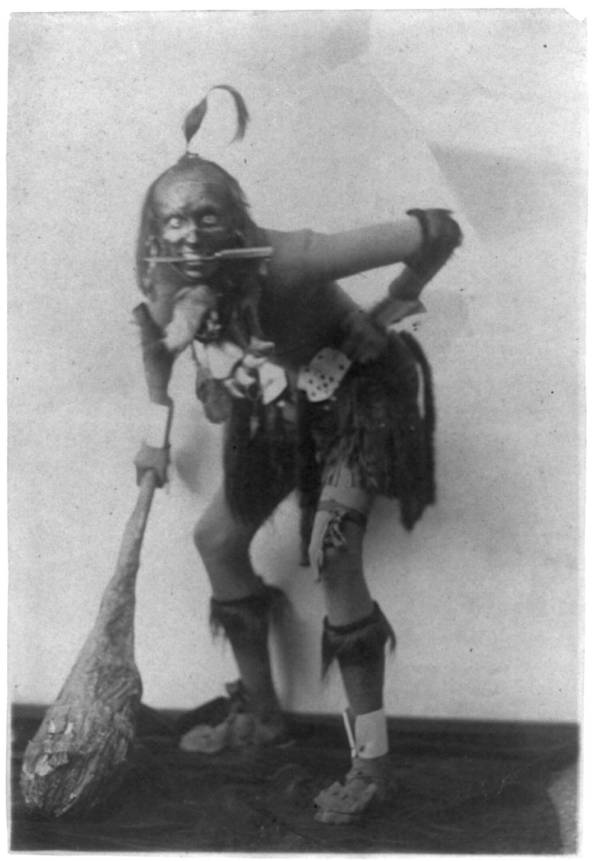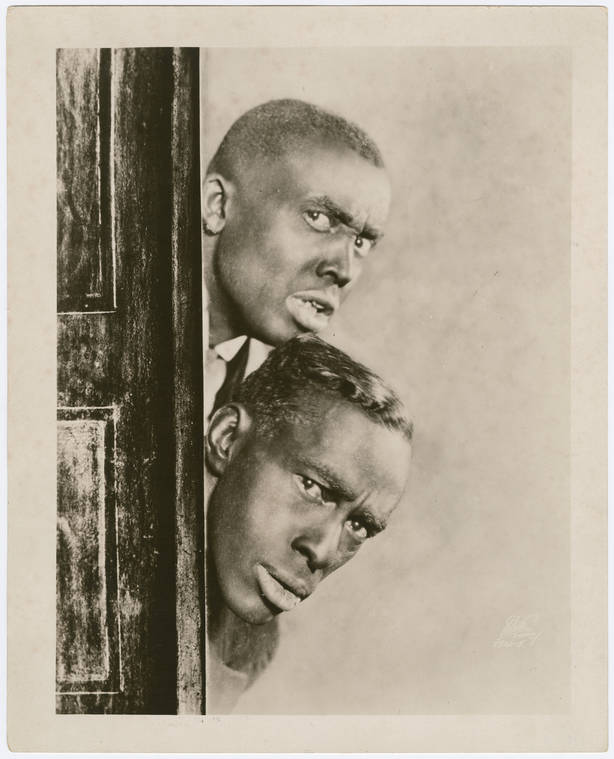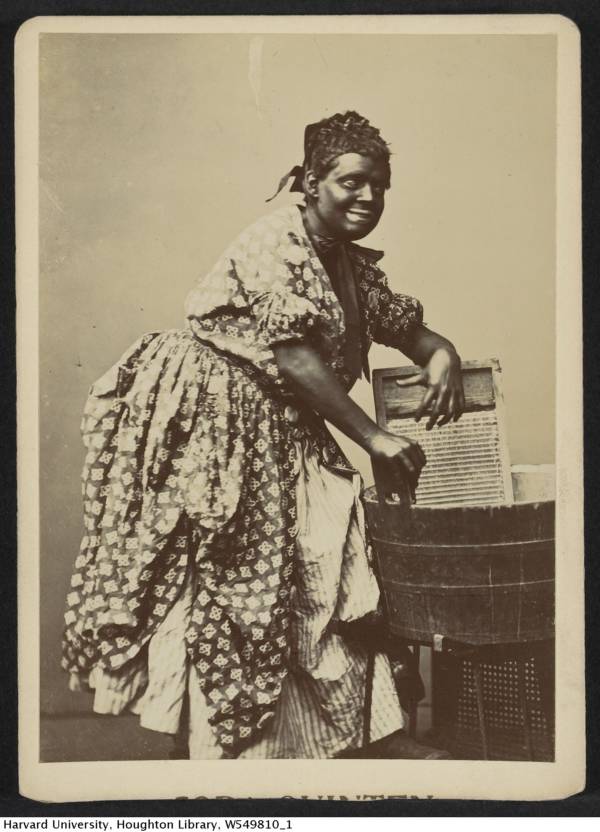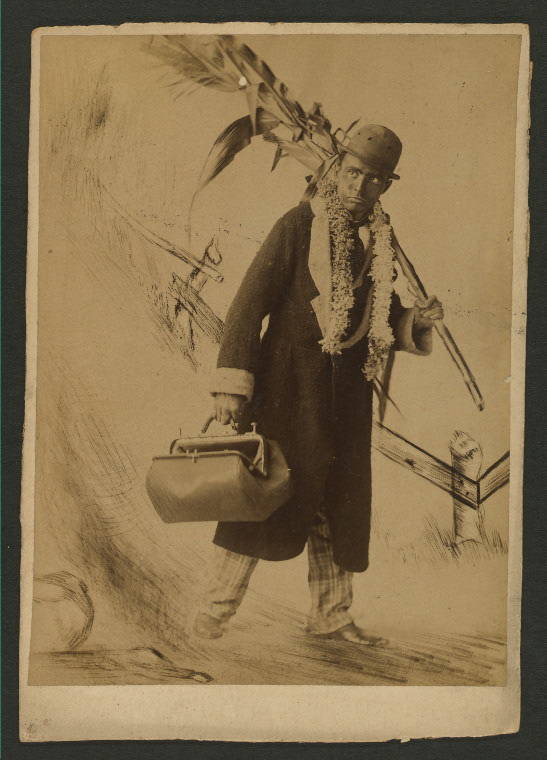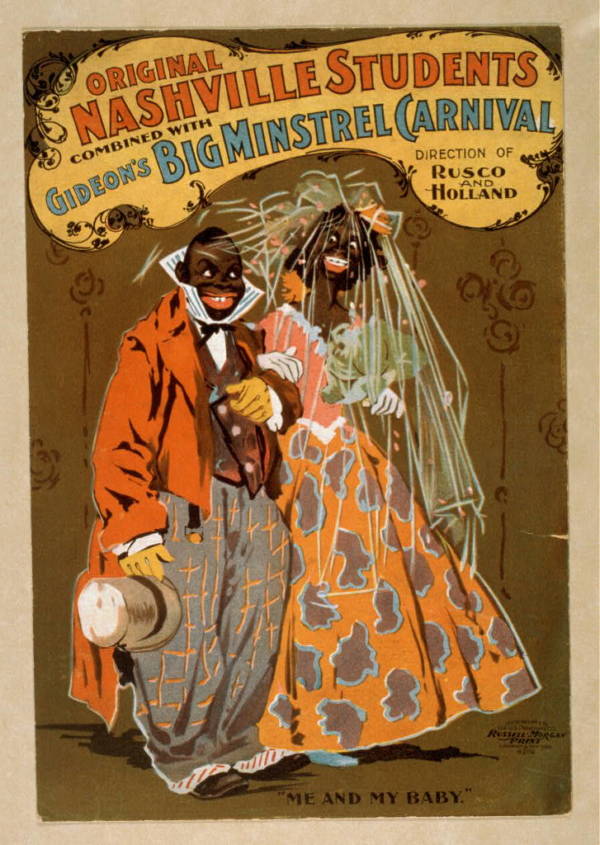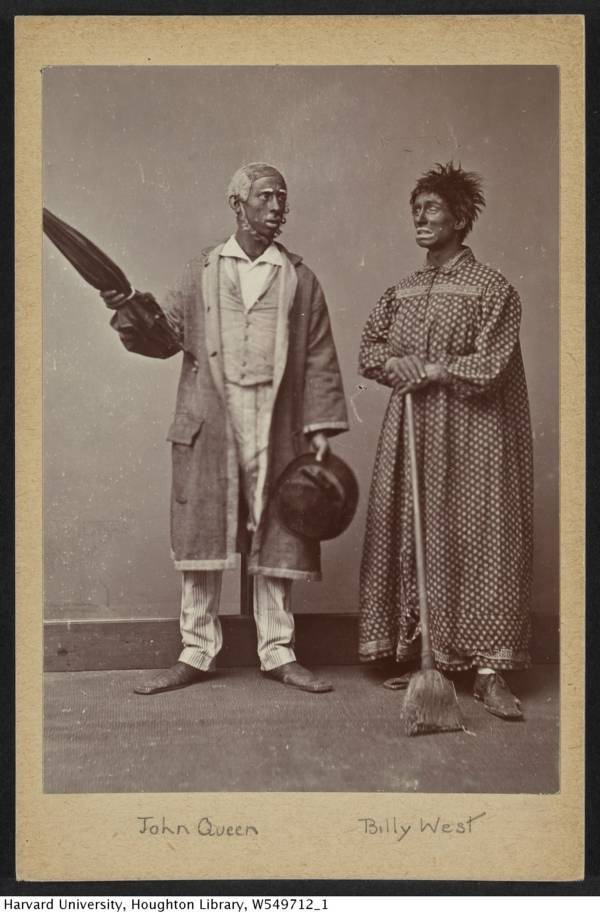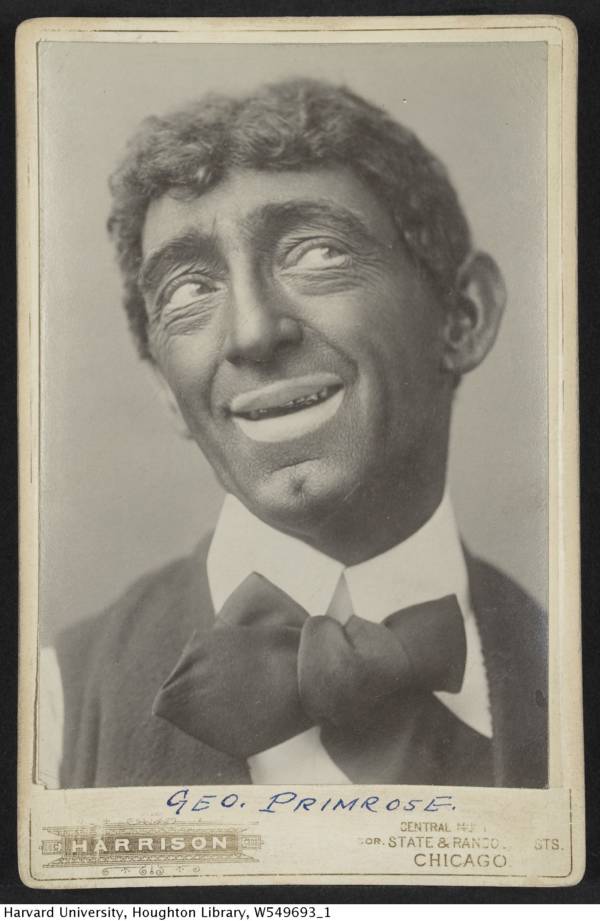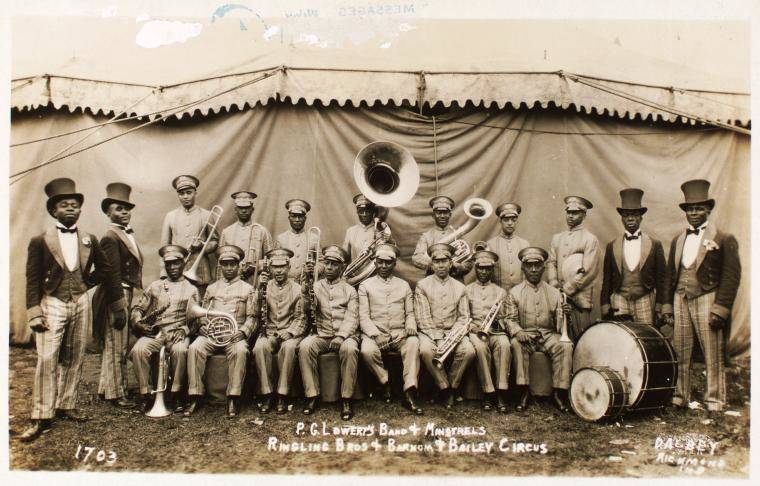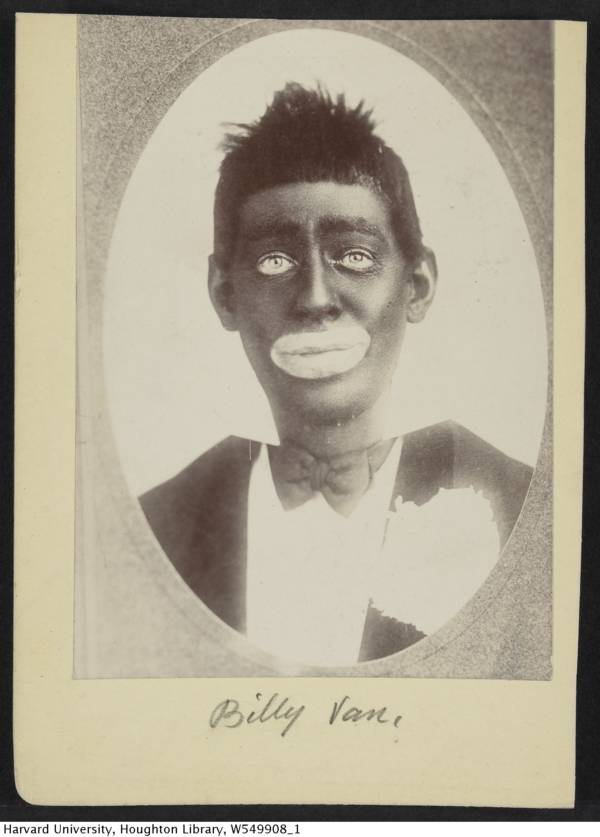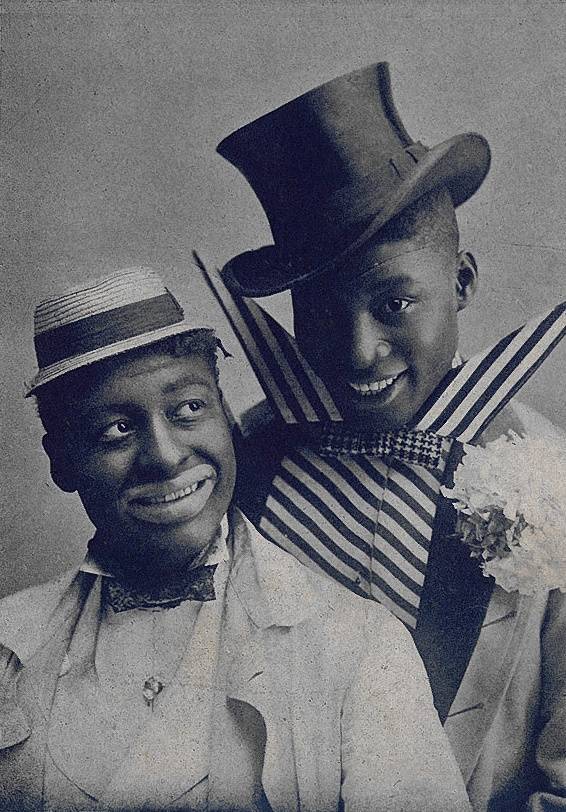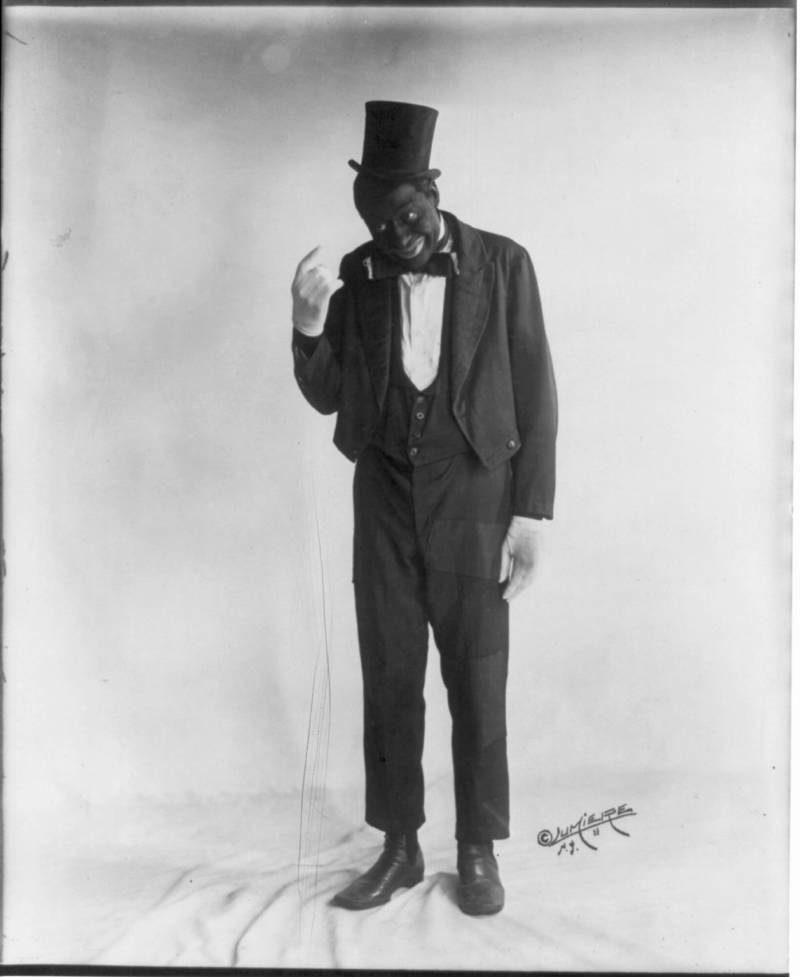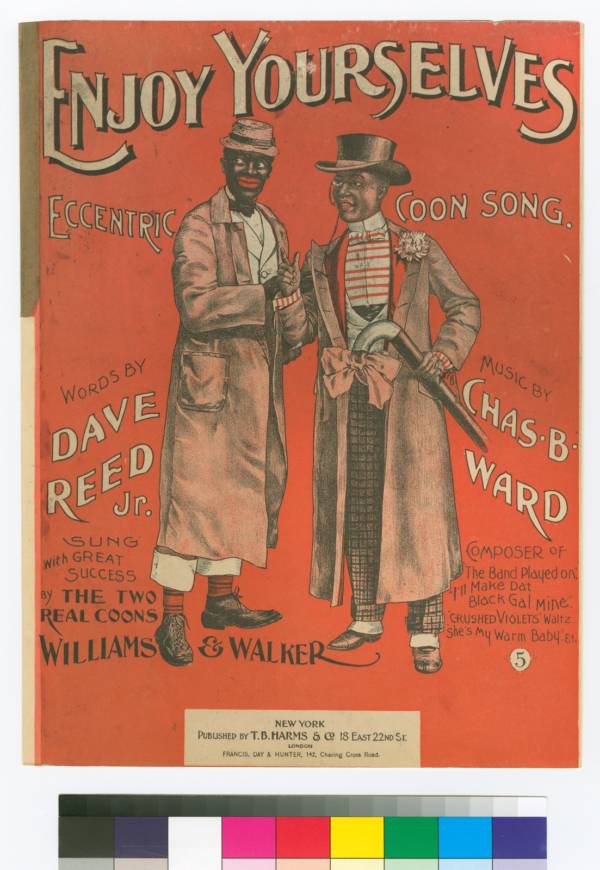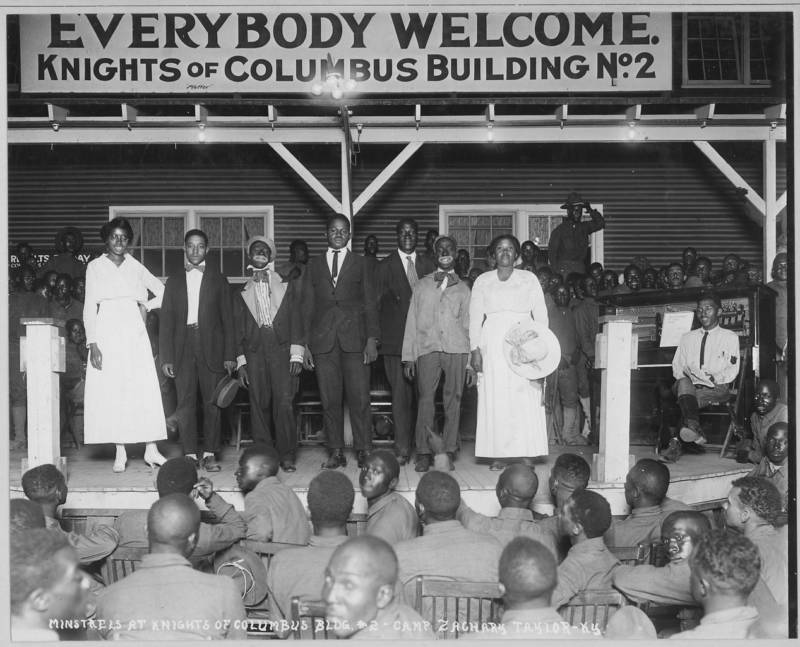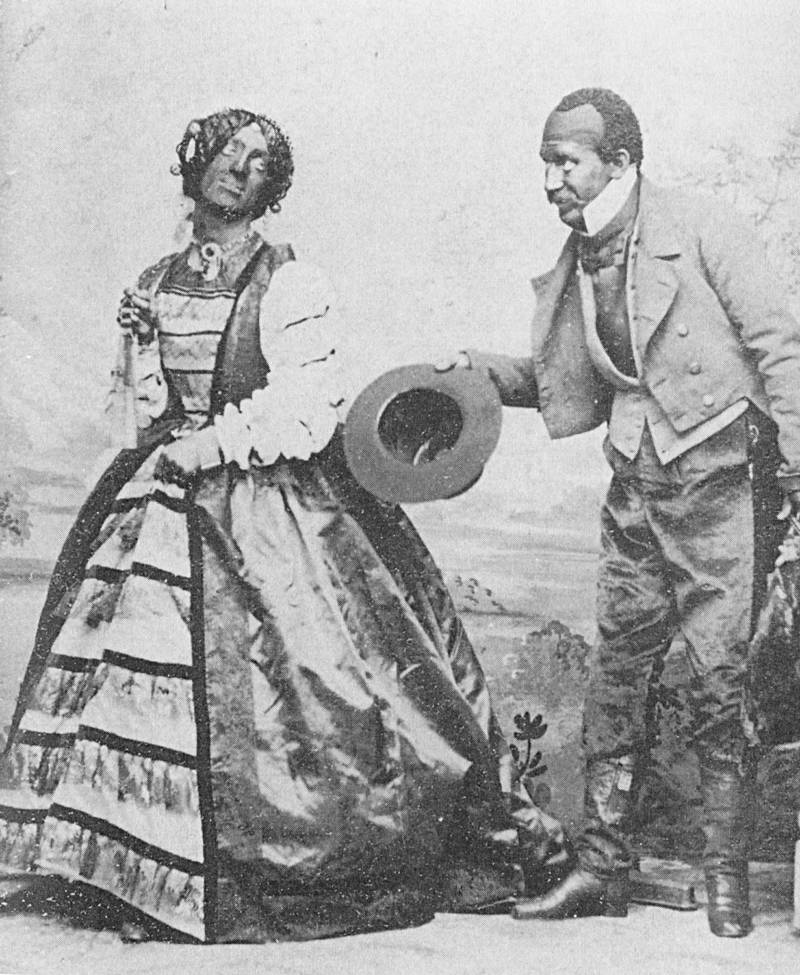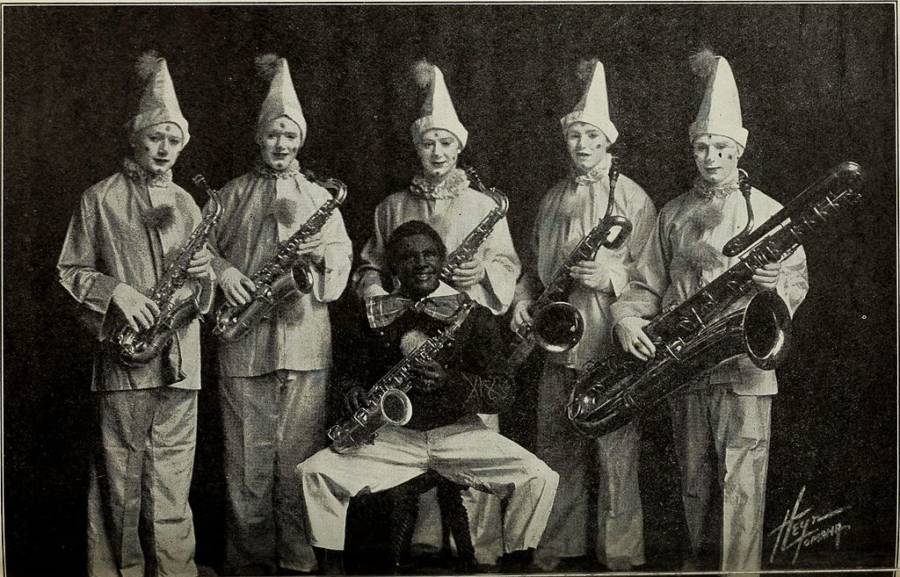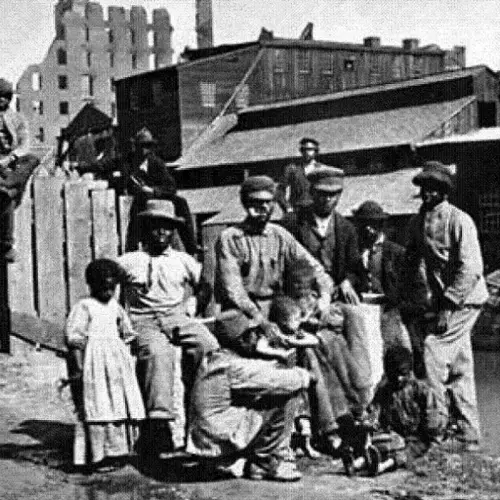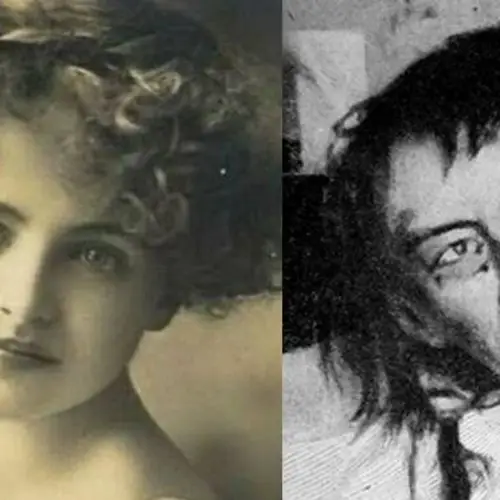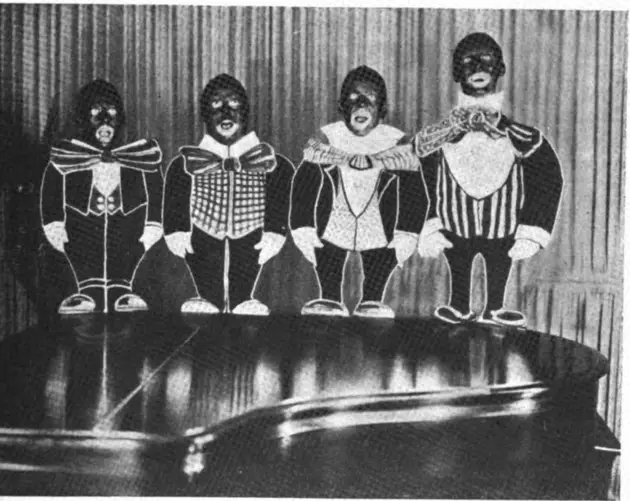1 of 40
A white performer in blackface.
New York City, New York. Circa 1890-1910.Wikimedia Commons
2 of 40
The sheet music for a song called "Whar de Watermelon Grow."
New York City, New York. 1898.New York Public Library
3 of 40
An actor named Mills Thompson dresses up as a stereotypical "savage," complete with a club and a bone through his nose.
New York City, New York. 1895.Wikimedia Commons
4 of 40
A group called the Radio 4 sing, "Sweet 'taters and possum 'way down in Alabam'! Yum yum!"
Location unspecified. August 1922.Wikimedia Commons
5 of 40
Vaudeville comedy duo Miller and Lyles at work.
Though Miller and Lyles were African-Americans, they painted their faces darker and played in minstrel roles to appease the crowd's expectations.
New York City, New York. Circa 1909-1928.New York Public Library
6 of 40
A young Bijou Fernandez, who would later become an early Hollywood star, in blackface.
New York. Circa 1880-1900.New York Public Library
7 of 40
The sheet music to the offensively-named song "All Coons Looks Alike To Me."
The song's writer, Ernest Hogan, was black. "That song cause a lot of trouble," Hogan admitted. He'd written it, though, to give the people wanted they wanted, explaining, "Money was short."
New York City, New York. 1896.New York Public Library
8 of 40
Performer Eddie Cantor, in full blackface, poses in front of an ad for Broadway's famous "Ziegfield Follies," letting people know that his minstrel act will be a part of the show.
New York City, New York. Circa 1917-1920.Wikimedia Commons
9 of 40
The Six Brown Brothers, a clown-and-minstrel act from Canada.
Location unspecified. Circa 1915-1920.Wikimedia Commons
10 of 40
Ernest Hogan, the composer of "All Coons Look Alike To Me."
Location unspecified. 1909.Wikimedia Commons
11 of 40
Samuel S. Sanford dressed up as a woman, playing the role of the "mammy" character in a minstrel show.
Cambridge, Massachusetts. Circa 1890-1905.TCS 1.935, Harvard Theatre Collection/Harvard University
12 of 40
Thomas Dilward, a minstrel singer who performed under the name "Japanese Tommy."
Dilward wasn't Japanese, but his managers were worried that the crowd wouldn't take to a black performer. He was given his name to hide that, under the black makeup, he really had black skin.
Location unspecified. Circa 1855-1865Library of Congress
13 of 40
Miller and Lyles act out their "prizefighting" routine.
New York City, New York. 1910.New York Public Library
14 of 40
A man dressed up as the "mulatto wench" character.
Date and location unspecified.New York Public Library
15 of 40
An advertisement for a "big minstrel carnival."
New York City, New York. 1899.Wikimedia Commons
16 of 40
Minstrel performers John Queen and William H. West in blackface, dressed up as a man and his wife.
Location unspecified. Circa 1880-1902.Wikimedia Commons
17 of 40
George Primrose, a white comedian who made his living with his face painted black.
Chicago, Illinois. Date unspecified.TCS 1.935, Harvard Theatre Collection/Harvard University
18 of 40
The Working Boys' Glee Club and Minstrel Group, an amateur group of boys, none older than 15, who dress up in blackface to amuse their friends.
Fall River, Massachusetts. June 20, 1916.Wikimedia Commons
19 of 40
Mardi Gras revelers hit the streets, three of them decked out in blackface.
New Orleans, Louisiana. 1934.
Wikimedia Commons
20 of 40
The sheet music to the minstrel parody song called "De Coon Wid de Auburn Hair."
New York City, New York. 1899.New York Public Library
21 of 40
Two men in blackface, their drums and trombones at their side.
New York. 1912.New York Public Library
22 of 40
Charles Mack and George Moran, two vaudeville comedians who performed as the "Two Black Crows."
Location unspecified. November 1, 1929.Wikimedia Commons
23 of 40
The entertainment in a traveling circus. The band sits in the center, with four minstrel performers on their sides.
Date and location unspecified.New York Public Library
24 of 40
A man in blackface plucks at the banjo.
Date and location unspecified.New York Public Library
25 of 40
Vaudeville comedian Barry Maxwell in blackface.
Columbus, Ohio. Circa 1900-1919.TCS 1.935, Harvard Theatre Collection/Harvard University
26 of 40
An amateur minstrel show put on by volunteers from around the village.
North Hampton, New Hampshire. Circa 1930-1950.Wikimedia Commons
27 of 40
Vaudeville entertainers Simms and Wiley.
Chicago, Illinois. Circa 1920-1935.New York Public Library
28 of 40
The sheet music to the song "The Coon with the Big White Spot."
New York City, New York. 1895.New York Public Library
29 of 40
White comedian Billy B. Van in character wearing blackface.
Chicago, Illinois. Circa 1900-1919.TCS 1.935, Harvard Theatre Collection/Harvard University
30 of 40
A still image from an Otto Reutter film shows men in blackface trying to tie up a white man.
Germany. 1912.Wikimedia Commons
31 of 40
Vaudeville performers Bert Williams and George Walker. Both men are black, but Bert Williams has painted his face anyway.
New York City, New York. 1903.Wikimedia Commons
32 of 40
Bert Williams, dressed in blackface.
Location unspecified. 1921Wikimedia Commons
33 of 40
The sheet music for a minstrel song advertises that it was written by "two real coons."
New York City, New York. 1897.New York Public Library
34 of 40
Characters in blackface get excited over trapping and getting ready to eat a possum.
Location unspecified. 1889New York Public Library
35 of 40
Minstrels in blackface came out for every occasion — even for the all-black crowd at the unveiling of this Knights of Columbus building.
Louisville, Kentucky. August 1918.Wikimedia Commons
36 of 40
Star of the silver screen and early Hollywood elite Raymond Hitchcock, here seen in blackface.
Chicago, Illinois. 1919.TCS 1.551, Harvard Theatre Collection/Harvard University
37 of 40
George Griffin, dressed up as the "dandy" character, tries to woo Rollins Collins, dressed up as a woman to play the part of the "mulatto wench."
Location unspecified. 1855.
Wikimedia Commons
38 of 40
An amateur saxophone sextet, the leader dressed up in blackface and the others as clowns.
Omaha, Nebrasaka. 1921.Wikimedia Commons
39 of 40
Uncle Mack's Broadstairs Minstrels.
Kent, England. 1908.Wikimedia Commons
40 of 40
Like this gallery?
Share it:

